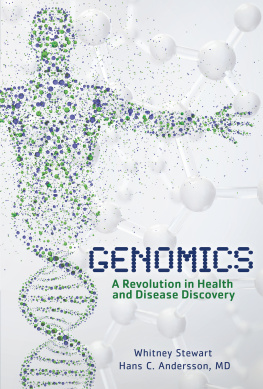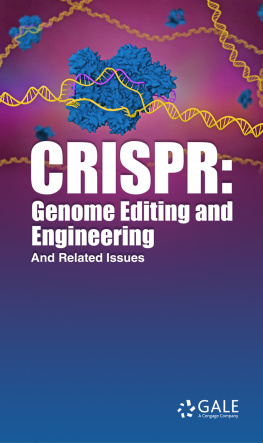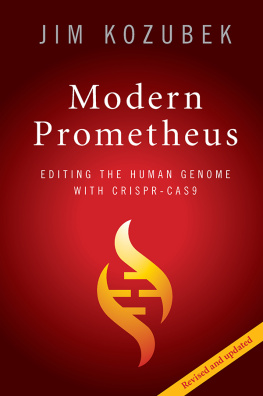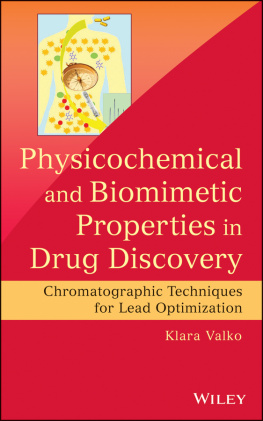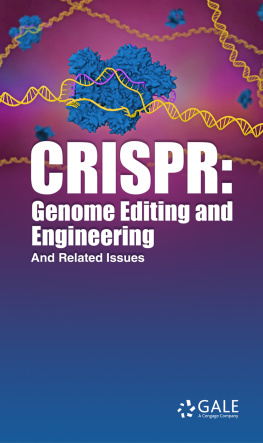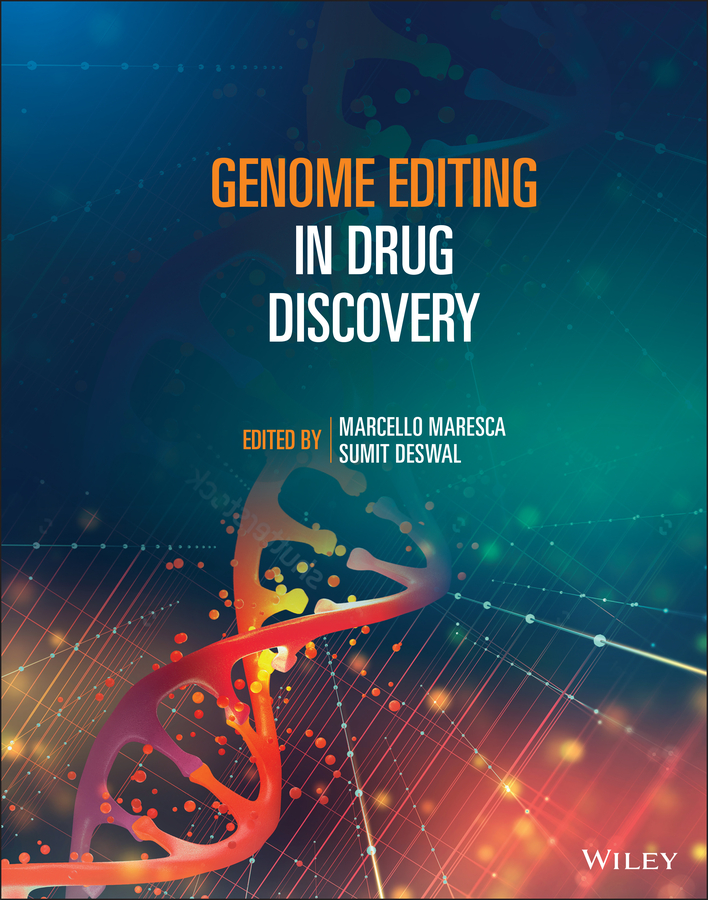
Table of Contents
List of Tables
- Chapter 4
- Chapter 5
- Chapter 6
- Chapter 7
- Chapter 8
- Chapter 9
- Chapter 11
- Chapter 12
- Chapter 13
- Chapter 15
- Chapter 16
- Chapter 17
- Chapter 18
- Chapter 20
List of Illustrations
- Chapter 2
- Chapter 3
- Chapter 4
- Chapter 6
- Chapter 7
- Chapter 8
- Chapter 9
- Chapter 10
- Chapter 11
- Chapter 12
- Chapter 13
- Chapter 14
- Chapter 15
- Chapter 16
- Chapter 17
- Chapter 18
- Chapter 19
- Chapter 20
- Chapter 22
Guide
Pages
Genome Editing in Drug Discovery
Edited by
Marcello Maresca
AstraZeneca, BioPharmaceuticals R&D
Mlndal, Sweden
Sumit Deswal
AstraZeneca, BioPharmaceuticals R&D
Mlndal, Sweden

This edition first published 2022.
2022 John Wiley & Sons, Inc.
All rights reserved. No part of this publication may be reproduced, stored in a retrieval system, or transmitted, in any form or by any means, electronic, mechanical, photocopying, recording or otherwise, except as permitted by law. Advice on how to obtain permission to reuse material from this title is available at http://www.wiley.com/go/permissions.
The right of Marcello Maresca and Sumit Deswal to be identified as the authors of the editorial material in this work has been asserted in accordance with law.
Registered Office
John Wiley & Sons, Inc., 111 River Street, Hoboken, NJ 07030, USA
Editorial Office
111 River Street, Hoboken, NJ 07030, USA
For details of our global editorial offices, customer services, and more information about Wiley products visit us at www.wiley.com.
Wiley also publishes its books in a variety of electronic formats and by printondemand. Some content that appears in standard print versions of this book may not be available in other formats.
Limit of Liability/Disclaimer of Warranty
In view of ongoing research, equipment modifications, changes in governmental regulations, and the constant flow of information relating to the use of experimental reagents, equipment, and devices, the reader is urged to review and evaluate the information provided in the package insert or instructions for each chemical, piece of equipment, reagent, or device for, among other things, any changes in the instructions or indication of usage and for added warnings and precautions. While the publisher and authors have used their best efforts in preparing this work, they make no representations or warranties with respect to the accuracy or completeness of the contents of this work and specifically disclaim all warranties, including without limitation any implied warranties of merchantability or fitness for a particular purpose. No warranty may be created or extended by sales representatives, written sales materials or promotional statements for this work. The fact that an organization, website, or product is referred to in this work as a citation and/or potential source of further information does not mean that the publisher and authors endorse the information or services the organization, website, or product may provide or recommendations it may make. This work is sold with the understanding that the publisher is not engaged in rendering professional services. The advice and strategies contained herein may not be suitable for your situation. You should consult with a specialist where appropriate. Further, readers should be aware that websites listed in this work may have changed or disappeared between when this work was written and when it is read. Neither the publisher nor authors shall be liable for any loss of profit or any other commercial damages, including but not limited to special, incidental, consequential, or other damages.
Library of Congress CataloginginPublication Data
Names: Maresca, Marcello, editor. | Deswal, Sumit, editor.
Title: Genome editing in drug discovery / Marcello Maresca, AstraZeneca, BioPharmaceuticals R&D, Mlndal, Sweden, Sumit Deswal, AstraZeneca, BioPharmaceuticals R&D, Mlndal, Sweden.
Description: First edition. | Hoboken, NJ : Wiley, 2022. | Includes index.
Identifiers: LCCN 2021025952 (print) | LCCN 2021025953 (ebook) | ISBN 9781119671343 (hardback) | ISBN 9781119671381 (adobe pdf) | ISBN 9781119671398 (epub)
Subjects: LCSH: Drug development. | Genetic engineering.
Classification: LCC RM301.25 .G46 2022 (print) | LCC RM301.25 (ebook) | DDC 615.1/9dc23
LC record available at https://lccn.loc.gov/2021025952
LC ebook record available at https://lccn.loc.gov/2021025953
Cover image: Yurchanka Siarhei/Shutterstock
Cover design by Wiley
Preface
The development of CRISPRCas9 for genome engineering has revolutionized the field of genome editing. Many of the cell types and animal models previously very challenging to genetic engineering, can now be engineered with high efficiency and precision using CRISPRCas9derived tools. This has led to the development of many novel disease models helping scientists to better understand disease biology as well as providing opportunity to test novel therapeutics. By performing largescale functional genomics screens with CRISPRCas9, it is now possible to identify and validate drug targets at a much faster rate and better precision. By assessing gene function comprehensively at large scale and in relevant cell type in early stages, candidate attrition rate is reduced. Genome editing is now part of almost every step in the early part of drug discovery pipeline, from target identification and its validation to mechanistic studies in relevant disease models. In addition, genome editing is used as a promising platform for gene therapy and molecular diagnostics.
We felt a need for a book comprehensively covering these important aspects of genome editing in drug discovery and therapy. Such a book will be of very much interest for those performing genome editing in research institutes or applying genome editing to drug discovery projects at pharmaceutical industries. Such a book will also help students of molecular biology, biotechnology, biochemistry, and pharmaceutical sciences to better understand this very important technology and to exemplify how basic research on a bacterial immune system can have such a big impact in life sciences.
We would like to thank staff at Wiley, especially Jonathan Rose, who first proposed the idea of this book. We would like to thank all the authors who spent their precious time in making this book a reality. Each of the chapter is written by experts on the respective topic working in top pharmaceutical/biotechnology companies or academic institutes.
We would also like to thank colleagues and management at AstraZeneca, Mohammad Bohlooly, Steve Rees, Mike Snowden, and Mene Pangalos for supporting us and allowing us to devote our time for such an academic exercise.
Marcello Maresca and Sumit Deswal
Gothenburg, SwedenApril 2021
List of Abbreviations
AAVAdeno-Associated VirusABEAdenosine Base EditorsADARAdenosine deaminases acting on RNAASOsAntisense oligonucleotidesCARChimeric Antigen ReceptorCas9CRISPR associated protein 9CBECytosine base editorsCRISPRClustered Regularly Interspaced Short Palindromic RepeatsCRISPRaCRISPR activationCRISPRiCRISPR interferencedCas9Dead Cas9DSBDouble strand DNA breakFACSFluorescence-activated cell sortingGEMMGenetically Engineered Mouse ModelHDRHomology Directed RepairiGEMInternational Genetically Engineered MachinesIPRIntellectual Property RightsLNPLipid Nano ParticlesNHEJNon-homologous end joiningPAMProtospacer adjacent motifspegRNAPrime editing guide RNARNAiRNA interferenceRNPRibonucleoproteinsgRNASingle guide RNAsiRNASmall interfering RNAshRNAShort hairpin RNATALENsTranscription activator-like effector nucleasesTGETherapeutic Genome EditingZFNsZinc finger nucleases
Next page

